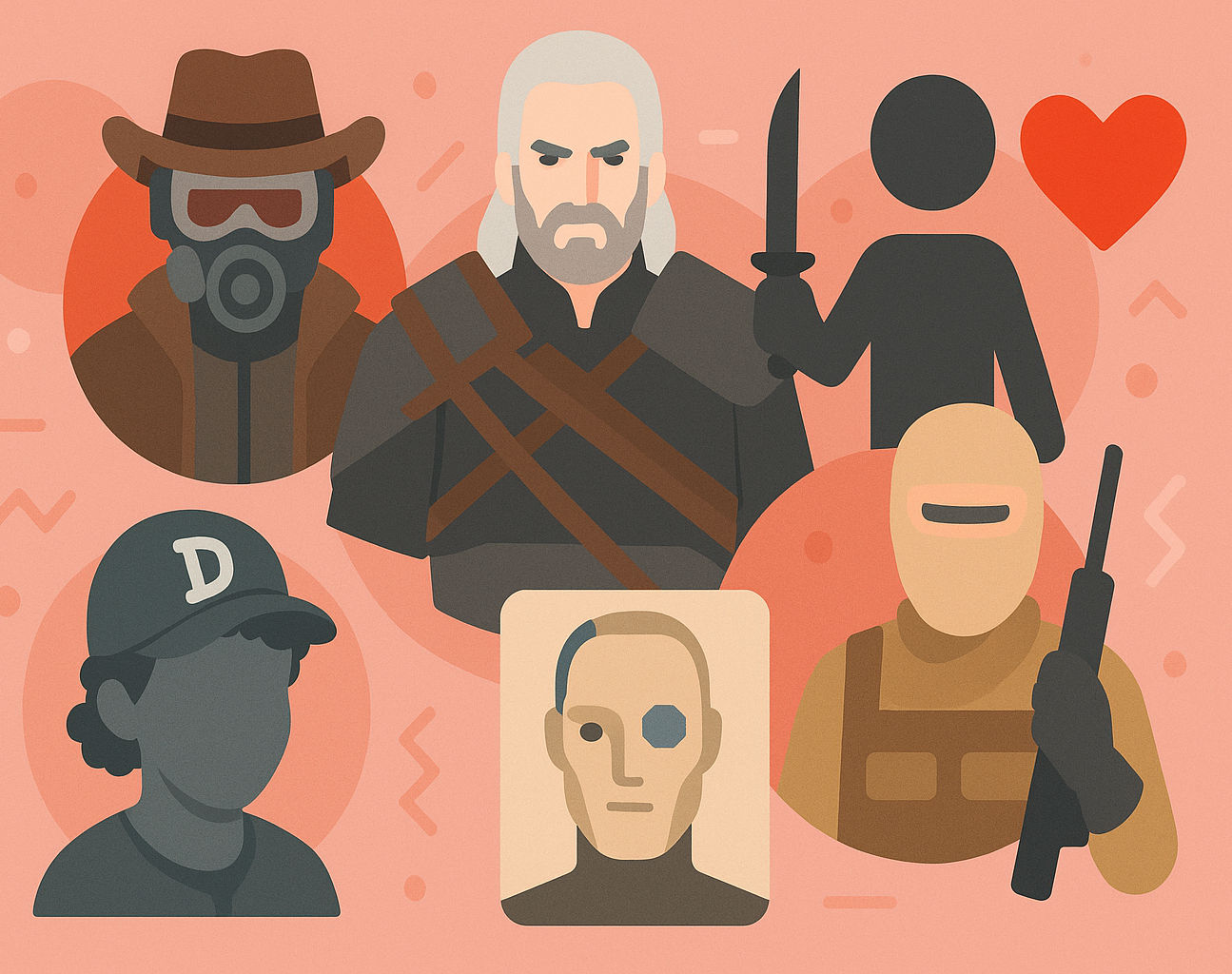Top 10 Games with Seamless World Design
October 13, 2025
In modern gaming, few achievements are as impressive as a truly seamless world design. Unlike traditional level structures that separate exploration with loading screens or artificial barriers, these worlds flow naturally, allowing players to move from one region to another without interruption. Seamless worlds heighten immersion, making exploration feel authentic and rewarding, while also encouraging curiosity about what lies just beyond the next hill or mountain.
The best open-world games with seamless design balance scale with detail. They combine vast landscapes, intricate ecosystems, and carefully designed transitions to ensure that the world feels alive and interconnected. Players are not just moving between zones—they are journeying through environments that evolve organically, creating the sensation of living in a single continuous reality. This design approach fosters freedom, reduces distraction, and keeps players emotionally invested in the journey.
This article explores the top 10 games with seamless world design, highlighting how each title blends technology, art direction, and gameplay philosophy to eliminate boundaries. From fantasy realms that stretch for miles to futuristic cities that never pause for loading, these games show that when a world feels whole, the experience becomes unforgettable.
10. Cyberpunk 2077 – Seamless Urban Future

Despite its controversial launch, Cyberpunk 2077 deserves recognition for its ambitious seamless urban world design. Night City is a sprawling, vertical metropolis that avoids artificial segmentation. Streets, skyscrapers, underground markets, and industrial outskirts all connect without breaks, giving the impression of a living, breathing city that never pauses.
The immersion comes from layering. You can drive across neon-lit highways, step directly into a crowded club, and then climb to a rooftop market—all without noticeable transitions. Each district flows naturally into the next, with cultural and architectural shifts reinforcing the city’s diversity. The seamless verticality is especially impressive, as players navigate multilevel buildings, subways, and rooftops in one continuous design.
Random encounters and dynamic NPC behaviors enhance this cohesion. A protest in the street, a gang skirmish in an alley, or a vendor shouting in the market all feel like pieces of a larger whole rather than isolated events. Keywords like Cyberpunk 2077 seamless futuristic city immersive world design highlight its achievement. Despite flaws, Night City captures the essence of a futuristic dystopia by ensuring that no part of it feels disconnected. Cyberpunk 2077 proves that seamlessness can thrive not only in nature-filled worlds but also in dense urban jungles where technology and humanity collide.
9. Shadow of Mordor – Seamless Combat and Exploration

Monolith’s Shadow of Mordor is remembered not only for its Nemesis system but also for its seamlessly designed open world. Players traverse Mordor without interruption, blending combat, stealth, and exploration into a continuous experience that rarely breaks immersion. The design avoids jarring transitions, ensuring that every action—from climbing fortresses to ambushing orc patrols—feels integrated into the same living environment.
The seamlessness is more than technical. The Nemesis system dynamically evolves enemy hierarchies, which means that exploration and combat are tied together in meaningful ways. As you move through Mordor, enemies you’ve faced before may reappear with scars or grudges, creating continuity not just in geography but in narrative as well. This blending of environment and story keeps the world reactive and unpredictable.
Dynamic weather, roaming beasts, and evolving strongholds further add to the sense of a continuous ecosystem. You might be sneaking through a camp when rain begins to fall, only to stumble into an ambush that feels completely unscripted. SEO-rich phrases like Shadow of Mordor seamless open-world combat dynamic Nemesis design emphasize why it stood out. By weaving exploration, combat, and progression into a fluid whole, Shadow of Mordor showed how seamless design could make a fantasy setting feel both vast and personal at the same time.
8. No Man’s Sky – Seamless Universe Exploration

No Man’s Sky offers one of the most ambitious takes on seamless exploration in gaming. Its procedurally generated universe allows players to travel between planets, moons, and star systems without loading screens. The transition from outer space to planetary surface is entirely fluid, creating a sense of infinite continuity.
The seamlessness is amplified by scale. Players can step out of their ship, explore alien flora and fauna, then return to orbit and travel to another star system—all in one unbroken sequence. This level of fluidity makes the universe feel boundless and alive, even years after release.
Keywords like No Man’s Sky seamless universe exploration design emphasize its innovation. Despite early struggles, updates transformed it into one of the most impressive seamless worlds ever created. By eliminating boundaries between space and planet, it redefined what exploration could mean, proving that seamless design can scale to galactic proportions.
7. Horizon Forbidden West – Seamless Nature and Technology

Guerrilla Games’ Horizon Forbidden West combines lush natural environments with futuristic ruins, crafting a seamlessly connected world that feels both organic and technologically complex. Players traverse deserts, jungles, and coastlines without interruption, while underground ruins and towering machines are woven into the landscape with precision.
The transition between biomes is strikingly natural. One moment Aloy explores sunlit coasts, and the next she climbs snowy peaks, all without breaking immersion. The interplay of nature reclaiming technology is reflected in seamless design, where ancient machines are as much a part of the world as forests and rivers.
SEO-rich terms like Horizon Forbidden West seamless open-world design highlight its accomplishment. By blending beauty with narrative depth, the game ensures that exploration feels continuous, rewarding, and meaningful. Horizon Forbidden West demonstrates that seamlessness is not only technical but thematic, tying together nature, technology, and storytelling.
6. Grand Theft Auto V – Urban Continuity Perfected

Rockstar’s Grand Theft Auto V is a masterclass in seamless urban world design. Los Santos, inspired by Los Angeles, is a sprawling city that flows without artificial boundaries. Highways, suburbs, beaches, and skyscrapers all connect organically, making transitions between zones feel natural.
What sets GTA V apart is the density of activity. Players can move from downtown to countryside in one continuous drive, with dynamic events occurring everywhere. The lack of noticeable loading enhances immersion, ensuring that the city feels like a living, breathing ecosystem. The seamless switching between characters further reinforces this flow, allowing narrative and exploration to intertwine.
SEO-focused terms like GTA V seamless city design immersive open world emphasize its cultural impact. By creating a city without boundaries, Rockstar allowed players to live in Los Santos as though it were real. GTA V proves that seamless design isn’t limited to fantasy or wilderness—it can make even an urban sprawl feel authentic and alive.
5. Assassin’s Creed Odyssey – Historical Seamlessness

Assassin’s Creed Odyssey delivers one of the most impressive seamless historical worlds ever created. Set in ancient Greece, the game allows players to sail between islands, explore cities, and climb mountains without noticeable transitions. Naval exploration flows naturally into land-based combat, creating a sense of continuity rarely seen in historical RPGs.
The brilliance lies in scale. Vast seas dotted with islands are traversable in real time, with seamless shifts from ship to shore. Cities like Athens and Sparta feel integrated with the countryside, and random encounters enrich travel rather than disrupt it. Every horizon is reachable, reinforcing immersion in a massive but unified world.
SEO-driven phrases like Assassin’s Creed Odyssey seamless ancient world design highlight its achievement. Ubisoft created not just a map but a living world that feels cohesive across land and sea. The game proves that historical settings can feel both epic in scale and seamless in design, transporting players into a past that feels continuous and alive.
4. Skyrim – Fantasy Realms Without Barriers

Bethesda’s Skyrim remains one of the most beloved seamless fantasy worlds in gaming, and even years after its release it continues to define what an open-world RPG should feel like. Its design encourages players to roam freely across snow-covered peaks, dense forests, sprawling plains, and ancient ruins without noticeable barriers interrupting the flow. Although some interiors and dungeons require brief transitions, the overworld itself remains continuous, which gives exploration a sense of endless discovery.
What makes Skyrim remarkable is its balance between scale and detail. You can ride for hours across the land, stumble upon hidden caves, encounter dragons soaring above mountains, or be ambushed by bandits on winding roads. Every path, river, and mountain feels interconnected, making the world feel not like a game map, but like a living ecosystem with history and secrets woven into every corner.
This seamlessness also enhances role-playing. Whether you choose to follow the main quest or simply wander as a hunter, thief, or mage, the design ensures that every journey feels natural. Keywords like Skyrim seamless open-world fantasy design immersive RPG underline how it shaped the future of role-playing games. By weaving story, exploration, and geography into one cohesive whole, Skyrim demonstrates that seamless design is essential to making a fantasy world feel alive, believable, and infinitely explorable.
3. Red Dead Redemption 2 – Realism Through Continuity

Rockstar’s Red Dead Redemption 2 is celebrated for its realism, and much of that comes from its seamless world-building. The American frontier unfolds without interruption, blending snowy mountains, bustling towns, and open plains into a cohesive, living environment. The lack of visible barriers allows players to feel truly immersed in the late 1800s setting.
Transitions are subtle and natural. A train ride flows directly through changing landscapes, while horseback journeys seamlessly shift from vibrant forests to dusty deserts. The continuity of wildlife, weather, and random encounters reinforces the feeling of living in a continuous world where nothing feels artificially segmented.
SEO-rich phrases like Red Dead Redemption 2 seamless world immersion highlight its innovation. The game goes beyond seamless transitions by embedding environmental storytelling into every detail. From a lone cabin in the woods to a massive cityscape, everything feels part of a single, cohesive frontier. Red Dead Redemption 2 proves that seamless design enhances realism, making exploration feel like genuine time travel.
2. Elden Ring – Open-World Soulslike Seamlessness

Elden Ring reimagined the Souls formula by placing it in a sprawling, seamlessly connected world known as the Lands Between. Unlike previous FromSoftware titles with more segmented maps, Elden Ring allows players to travel across diverse biomes—from haunted swamps to golden plains—without loading screens. The seamless design heightens immersion, making exploration feel both daunting and exhilarating.
What stands out is the verticality and variety of the world. Caverns lead to underground cities, cliffs open onto vast plateaus, and hidden dungeons appear naturally as part of the landscape. Players encounter bosses, ruins, and lore simply by wandering, reinforcing the studio’s philosophy of discovery through exploration.
SEO-focused terms like Elden Ring seamless open-world design exploration emphasize its achievement. The Lands Between feel organic and alive, with transitions so fluid that the line between exploration and storytelling blurs. Elden Ring proves that seamless design can coexist with punishing combat, creating a cohesive world that rewards curiosity as much as skill.
1. The Legend of Zelda: Breath of the Wild – Exploration Without Limits

Breath of the Wild is often hailed as the gold standard for seamless open-world design. Nintendo created a vast Hyrule where players can explore forests, deserts, mountains, and lakes without ever encountering a loading screen. Every hill and valley invites curiosity, and the ability to climb almost any surface makes the journey feel fluid and unrestricted.
The brilliance lies in how naturally the world flows. Weather systems, wildlife, and dynamic physics interact seamlessly, creating a living environment where exploration feels organic. A storm may push you to shelter in a cave, only for you to discover a hidden shrine. A distant mountain peak is never just scenery—it’s a destination waiting to be conquered.
SEO-rich phrases like Breath of the Wild seamless exploration world design capture its influence. By removing artificial barriers, Nintendo crafted a Hyrule that feels cohesive, immersive, and full of possibility. Breath of the Wild proves that seamlessness is not just technical but philosophical, encouraging players to lose themselves in a world without limits.
Final Thoughts
The top 10 games with seamless world design illustrate how interconnected environments can elevate immersion. By removing artificial barriers, these titles create living, breathing spaces where exploration feels authentic and rewarding. Whether traversing the natural splendor of Breath of the Wild, the gritty realism of Red Dead Redemption 2, or the futuristic verticality of Cyberpunk 2077, seamlessness makes every journey feel cohesive.
What unites these games is their commitment to continuity. They prove that seamless design is more than a technical feat—it is a narrative tool that shapes how players perceive worlds. When transitions vanish, players stop thinking about maps and loading screens and start believing in the reality before them. This authenticity strengthens emotional connection, making victories, discoveries, and stories feel more personal.
SEO-focused terms like seamless open-world design in gaming capture why these titles stand apart. They inspire developers to push boundaries and remind players that immersion is strongest when a world feels whole. As technology advances, seamless worlds will only grow richer and more dynamic, creating experiences where exploration never ends. For gamers, these masterpieces prove that sometimes the greatest storytelling comes not through words but through the unbroken landscapes we inhabit.


